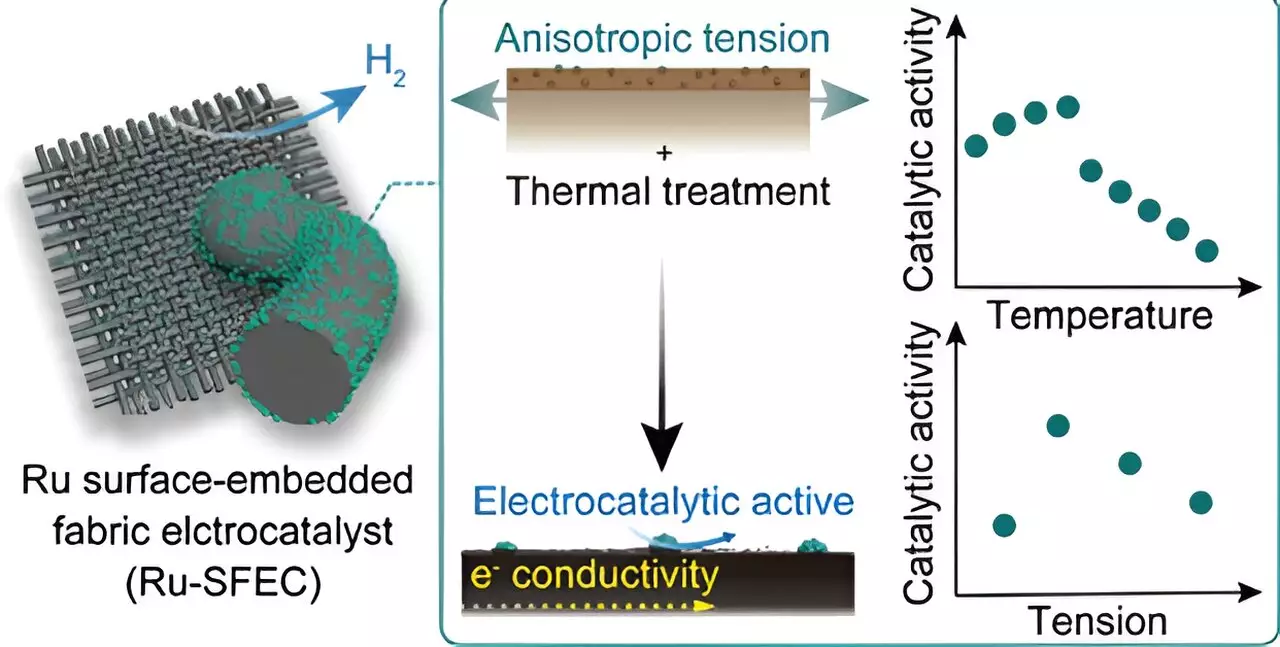In a recent breakthrough reported in the Journal of the American Chemical Society, a team of researchers led by Professor Han Gi Chae and Professor Jong-Beom Baek at UNIST have developed a new technology to address the limitations of current catalyst electrodes, paving the way for the large-scale production of green hydrogen at a relatively low cost. This innovative development has the potential to revolutionize the field of hydrogen production and significantly impact the renewable energy sector.
Traditionally, electrochemical electrodes were manufactured using a powder catalyst sprayed onto the electrode surface for fixation. However, this method posed challenges such as uneven application, clumping, and detachment of the powder. To overcome these limitations, the research team collaborated with Professor Kafer T. Tavuz at KAUST to develop carbon fabric electrocatalysts embedded with highly functional catalysts using a conventional carbon fiber/fabric manufacturing process. This new design allows for stable operation across large areas, utilizing a carbon fiber catalyst that offers superior stability compared to powder-type catalysts.
The team integrated ruthenium (Ru) into the polymer precursor fiber during the manufacturing process, enhancing the stability of the catalyst. By using polyacrylonitrile (PAN) as the precursor polymer, the team successfully expressed the catalyst’s characteristics in a stable manner. Ruthenium was selectively affixed to the surface as a chemical catalyst, replacing the more expensive platinum typically used in conventional electrodes. The resulting ruthenium surface-embedded fabric electrocatalysts (Ru-SFECs) demonstrated low overvoltage and energy consumption during the hydrogen generation process, showcasing remarkable stability and efficiency.
The new carbon fiber electrode with a functional catalyst attached offers a significant cost advantage over traditional electrodes dependent on expensive platinum-based catalysts. The use of ruthenium instead of platinum, combined with its incorporation into the polymer precursor fiber early in the manufacturing process, allows for the creation of electrodes with low overpotential and high stability. The exceptional mechanical and electrical properties of carbon fibers further enhance the performance of the electrodes, making them versatile for future electrochemical reactions.
The research team’s innovative approach opens up possibilities for developing stable, binder-free, and flexible electrocatalytic electrodes for various applications. Future research efforts should focus on enhancing mechanical durability, electrical conductivity, and cost-effectiveness of these electrodes. The continuous production of catalyst-supported carbon fibers on a semi-pilot line achieved in this study demonstrates technological maturity suitable for real-world implementation, highlighting the immediate practical applications of this groundbreaking technology.
The development of advanced carbon fabric electrodes embedded with highly functional catalysts represents a significant step forward in the production of green hydrogen. This innovative technology not only offers energy-efficient manufacturing processes but also reduces waste production, making it a promising solution for sustainable hydrogen production. With further research and development, electrodes like the Ru-SFECs could play a crucial role in the widespread adoption of green hydrogen as a clean and renewable energy source.


Leave a Reply